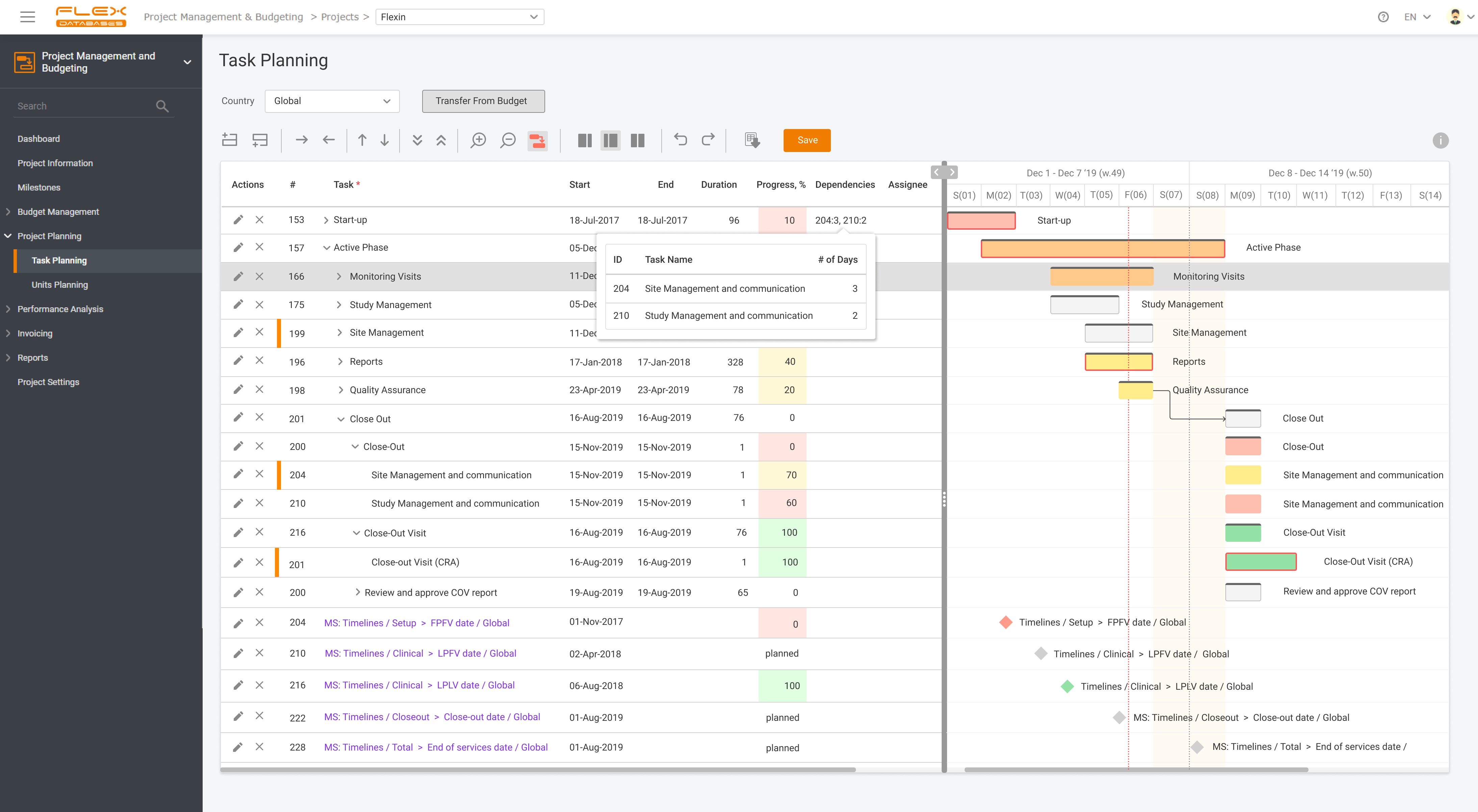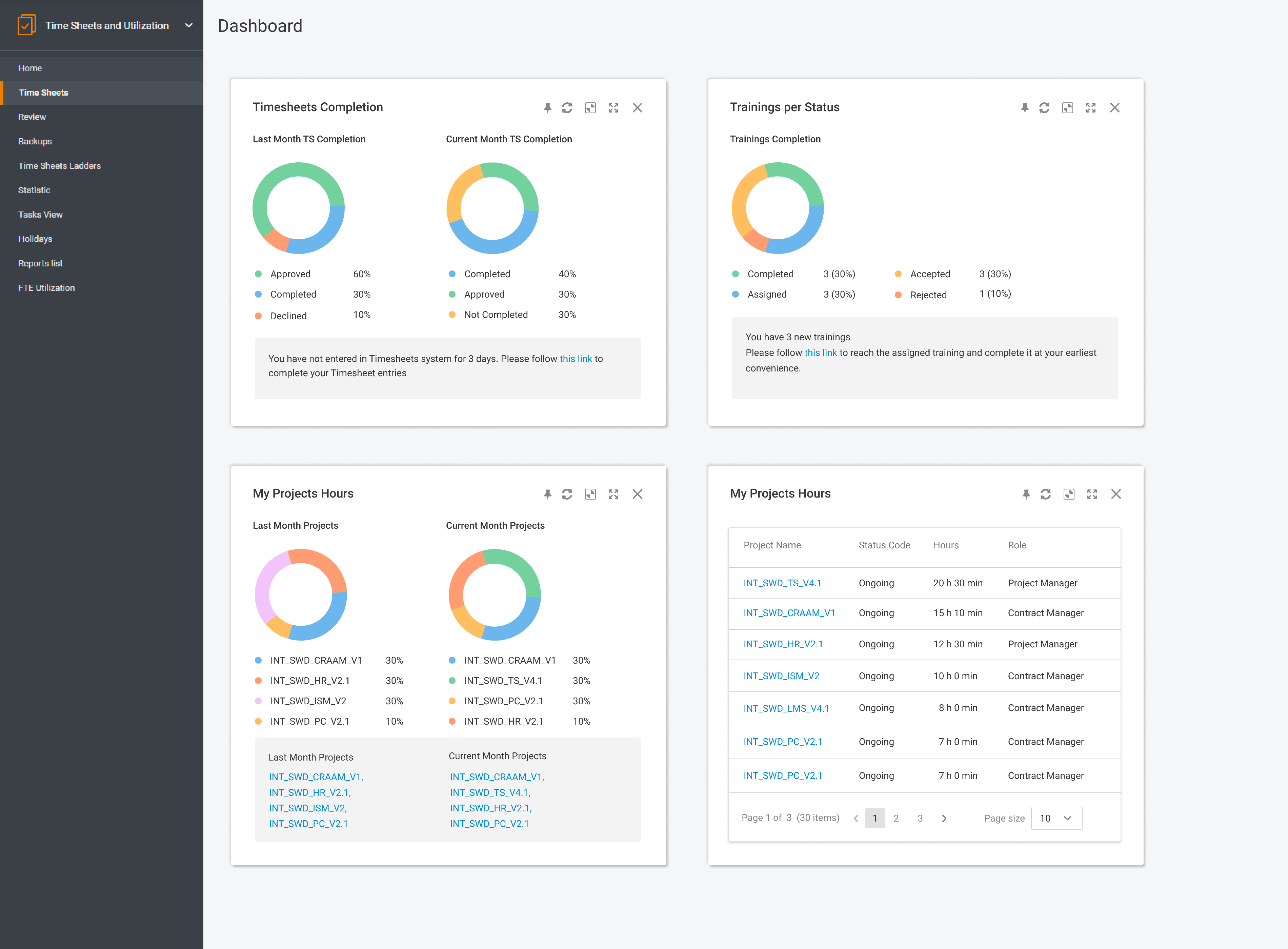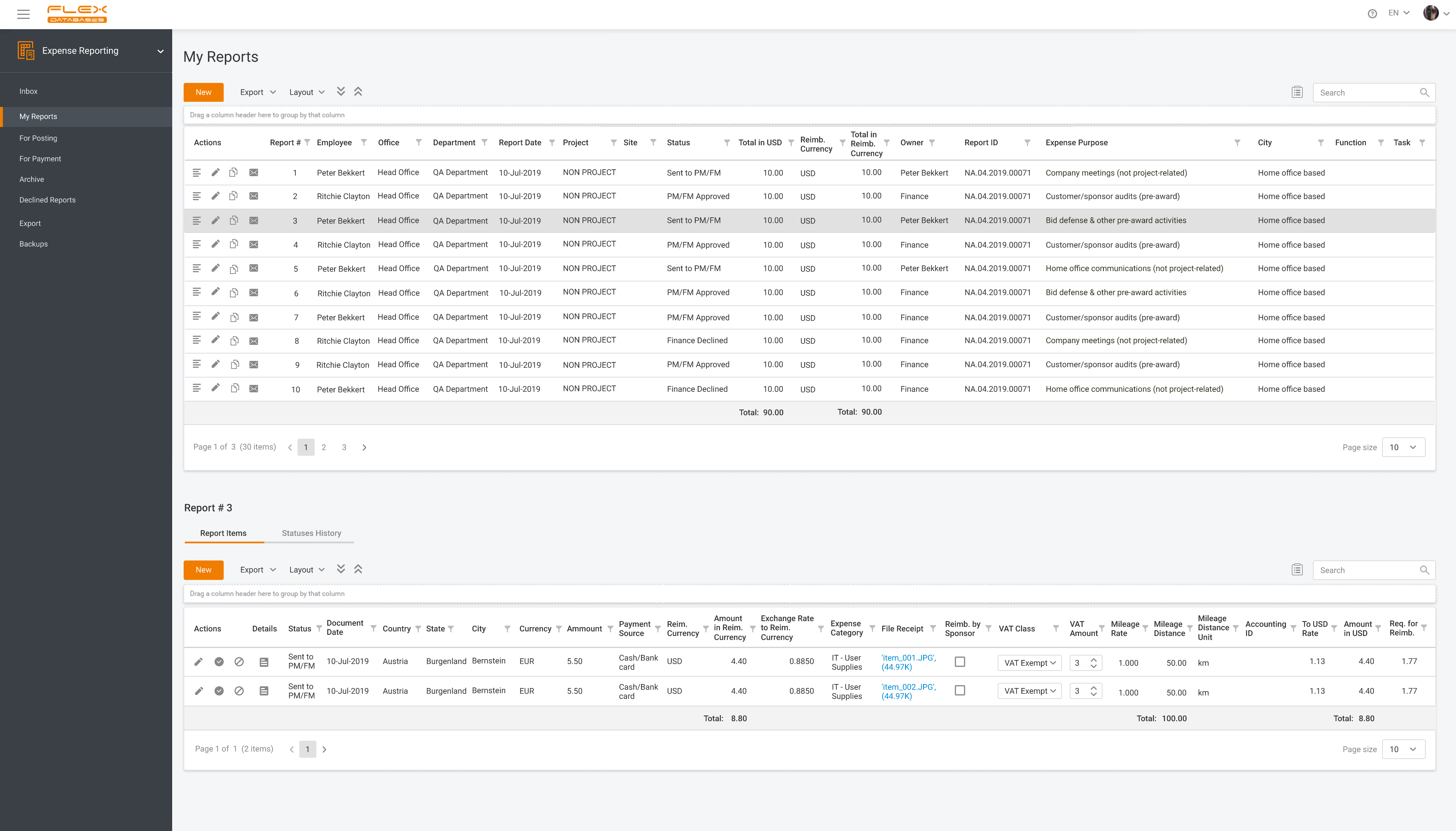




Hard things simplified into one logical flow – budget a project, transfer it into planning with one button, plan a project, get automated reporting on project progress, visuals and automated invoicing, see earned value analyses and so much more.








Drop us a line and we be happy to answer all your questions
Clients
Daily users
Documents
Clinical trials
Countries
Effective site selection and management are critical components of successful clinical trials. Choosing the right locations and overseeing their operations can significantly impact the trial’s timeline, budget, and ultimately, its success in delivering reliable data. This article explores essential strategies for optimizing site selection and management, highlighting key considerations, practical tips, and the role of […]
This October, Metronomia Clinical Research GmbH chose Flex Databases as Project Management & Budgeting solution provider. Here’s how Metronomia’s team describes the new partnership: “We have been using Excel for many project management and budget-related activities so far. With an increasing number of projects and customers, this approach does not scale well and makes reporting […]
International clinical trials, in most cases, mean multiple currencies and exchange rates throughout all financial operations. Be it site or PI payments or transport and meal compensation for the patients; you will face the need to handle currency conversions in contracts and invoicing. Usually, everybody faces a lack of control and transparency when it comes […]
As the business grows, it becomes critical to learn how to manage resources efficiently. Using Excel spreadsheets to track the utilization of available resources is no longer an option, especially if your company expands globally or conducts sophisticated projects with a lot of data points. Resource utilization allows you to monitor resources at your disposal and […]
Get in touch to discuss compliance, implementation, demos, pricing
We are here for all of your questions! Tell us more about yourself and we will organize a tailored live demo to show how you can power up your clinical trials processes with Flex Databases.